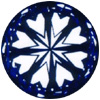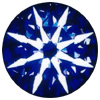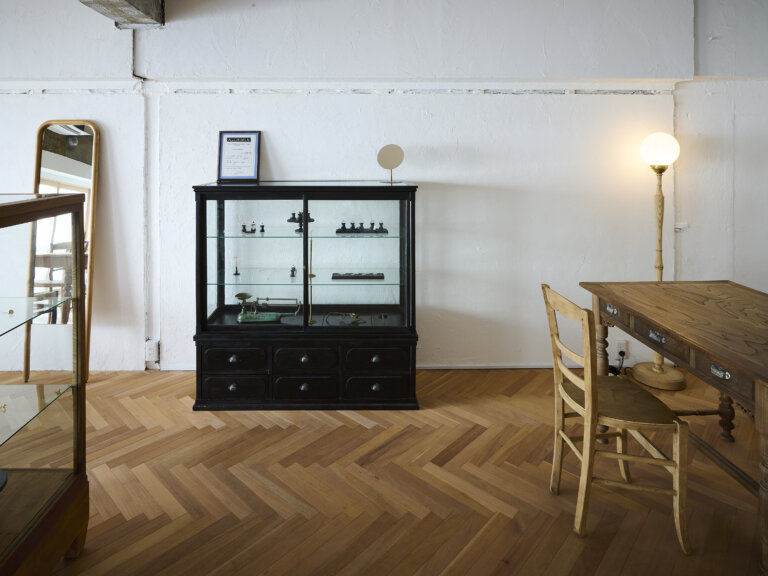Diamonds are the most important element of a ring. Their prices vary widely depending on size and grade, and many people find it difficult to decide which diamond is the best choice. In this article, we’ll share insights from over 50 years of crafting engagement rings in Sangenjaya on choosing a diamond that balances stunning beauty with excellent value, all while staying within your budget.
Diamond Basics
First, let’s take a closer look at what makes up a diamond’s grade. Diamonds are judged by what’s called the “4Cs”: Carat, Color, Clarity, and Cut.
Carat
Carat refers to a diamond’s weight—one carat equals 0.2 grams. Larger diamonds are rarer, stand out more, and naturally come with a higher price tag.
It is the easiest of the diamond grading factors to understand, so it often draws the most attention. However, it’s important to evaluate it together with the other three Cs—color, clarity, and cut—for a well-balanced choice.
Color
Color measures how colorless or transparent a diamond appears.
Diamonds are ideally colorless, and the GIA (Gemological Institute of America) grades them on a scale from D to Z. D represents completely colorless stones, while diamonds gradually show more yellow as the grade approaches Z.
Clarity
Clarity refers to a diamond’s transparency and the presence of any internal or external imperfections, such as inclusions and blemishes.
It is assessed based on the size, number, location, and type of these imperfections, and graded on an 11-level scale from FL (Flawless) to I3 (Included). Diamonds with fewer flaws and higher transparency are more valuable.
Cut
Cut refers to a diamond’s shape and the quality of its craftsmanship or finish.
A freshly mined diamond may look like just an ordinary stone, with no sparkle at all. It’s only through precise cutting and polishing that it transforms, revealing the dazzling brilliance that makes diamonds so captivating.
The ideal cut allows a diamond to reflect light beautifully, producing a stunning sparkle. The GIA grades cuts on a five-point scale, from Excellent to Poor, and the higher the grade, the more dazzling the diamond appears.
How to Choose Diamonds That Look Beautiful to the Eye
While it’s possible to choose a diamond based purely on its grade, that approach often comes with a steep price tag.
At our atelier, we prioritize what truly counts: how breathtaking a diamond looks in person.
A diamond that captivates doesn’t always need top scores in all 4Cs—or the highest cost.
With over 50 years of experience, our long-established workshop offers expert guidance, helping you select a diamond that balances stunning visual appeal with thoughtful value, rather than focusing solely on grades.
Firstly, Never Compromise on Cut
When selecting a diamond for an engagement ring, the single most important aspect to focus on is its cut.
When a rough diamond is expertly shaped with a precise brilliant cut, it captures and reflects light like no other gemstone, revealing an extraordinary sparkle. The closer the cut approaches ideal proportions, the more radiant the diamond appears. On the other hand, even the finest color or clarity cannot make up for a cut that falls short—without it, a diamond simply won’t shine at its best.
For an engagement ring, a cut grade of Very Good or above is advisable, but our preferred choice is always Excellent.
The Triple Excellent Heart & Cupid (3EX H&C) cut is our top recommendation for maximum brilliance!
A Heart & Cupid diamond boasts exceptional proportions and symmetry, revealing eight “hearts” and “arrows” under a special loupe. Named after the tale of Cupid’s arrows striking hearts, these diamonds are both rare and exceptionally valuable.

Eight Hearts
(bottom view)

Eight Arrows
(top view)
Next, Choose Diamonds with Superior Color
A diamond set in a ring lets light pass through it beautifully, making its quality visible to the naked eye. Among the 4Cs, color is especially noticeable—whether a diamond is perfectly colorless or slightly yellow can be seen at a glance when compared. After cut, color is the next most important factor to consider. For engagement rings, we recommend choosing a diamond with a grade of G or H or higher to ensure a stunning appearance.
Then, Keep to the Minimum Necessary Clarity Grade
The most important point in our diamond selection policy may be how we view the grade of “Clarity”.
While many bridal ring specialty stores tend to emphasize the importance of clarity, such as “the miraculous IF class” or “use only VVS or higher,”
at our store, we consider the importance of the clarity grade and the location of any flaws (inclusions) to be more important.
We do not consider the clarity grade to be particularly important, only the location of flaws (inclusions) to be important.
When it comes to engagement rings, we tend to be attracted by the phrase “flawless,” but grades such as IF and VVS are the stuff of microscopes, and the most important thing is that the ring is beautiful to the eye. In terms of the value of “beauty to the eye,” it can be said that "inclusions that are difficult to detect under 10 times magnification" in the [VS] class is sufficient, and if there are no problems with the location of flaws, the [SI] class will not have a significant impact on the beauty of the diamond.
If you are on a budget, the grade is fine.
If you have a budget to spare, the higher grade is better, but compared to VS, the price of VVS is about 1.5 times higher even if the cut and color grades are the same.
In our store, we recommend that you decide to choose a VS 0.5ct diamond, which is about the same price as a VVS 0.3ct and almost as beautiful to the eye.
VVS1–VVS2: Minute inclusions that are extremely hard to spot even under 10x magnification
VS1–VS2: Small inclusions that are hard to spot even under 10x magnification
SI1–SI2: Inclusions easy to detect under 10x magnification, usually not visible to the naked eye
I1–I3: Inclusions easily visible to the naked eye
And Finally, A Diamond Carat that Suits Your Budget
0.1 ct
Diameter 3.0mm
0.2 ct
Diameter 3.8mm
0.3ct
Diameter 4.4mm
0.4ct
Diameter 4.8mm
0.5 ct
Diameter 5.1mm
0.7ct
Diameter 5.8mm
1.0 ct
Diameter 6.5mm
When selecting a diamond, it’s important to first meet the minimum standards for cut and color, and then choose the largest carat that falls within your budget. Prioritizing carat size simply because “bigger is more impressive,” at the expense of cut and color grades, is not advisable. Also, a larger diamond isn’t automatically better—it should also suit the wearer’s hand. With a well-cut, high-quality stone, even a size around 0.3ct can be more than sufficient for an engagement ring.
Summary
Focus on cut and color first, then choose a carat size that fits your budget and matches the look you envision.
What diamonds are ideal for various budget ranges?
Here are some diamonds carefully chosen following our store’s selection guidelines, matched to different budgets.
The prices listed below are for the loose diamonds only. The final price of your engagement ring will include the cost of the diamond plus the ring material.
Reference Price of Loose Diamonds
0.2 ct
Around 100,000 yen
Color: D
Clarity: VS1
Cut: 3EX H&C
0.3ct
Around 200,000 yen
Color: D
Clarity: VS1
Cut: 3EX H&C
0.4ct
Around 300,000 yen
Color: E
Clarity: VS2
Cut: 3EX H&C
0.5 ct
Around 400,000 yen
Color: E
Clarity: VS2
Cut: 3EX H&C
How did you find our diamond recommendations? We hope it helps you to choose the right diamond for you.
We have samples of typical grades of diamonds in our stores. We believe that you will be able to better understand the differences in size and grade if you visit our store and actually hold the diamond in your hand. Please feel free to visit us first.
Graded diamonds purchased from our store come with a certificate of authenticity.




